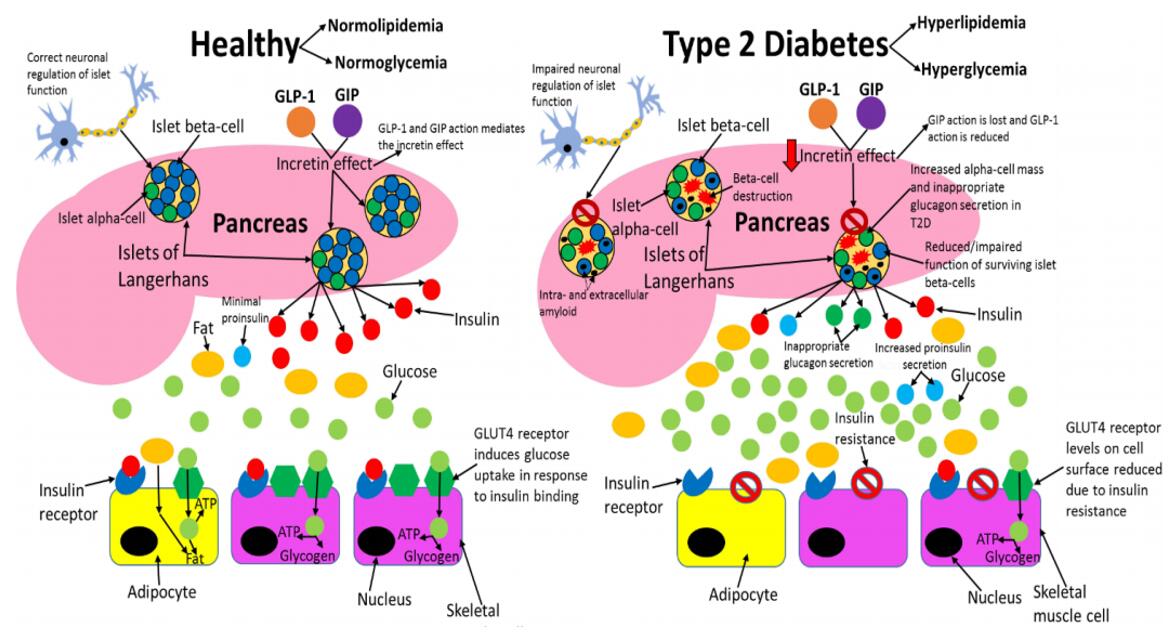Type 2 diabetes (T2D) is a chronic metabolic disorder characterized by insulin resistance and dysfunction of pancreatic beta cells, resulting in elevated blood glucose levels. To better understand the cellular mechanisms underlying T2D and identify potential targets for therapeutic intervention, researchers have developed cellular models of T2D using various cell types, including pancreatic beta cells, liver cells, and adipocytes.
 Figure 1. Comparing healthy and type 2 diabetic phenotypes.[1]
Figure 1. Comparing healthy and type 2 diabetic phenotypes.[1]
The Type 2 Diabetes (T2D) cellular model provided by Creative Bioarray is a valuable tool for researchers studying the pathogenesis and potential treatments for T2D. Our T2D cellular model can be used to investigate the underlying mechanisms of T2D, screen potential drug candidates, and develop personalized therapies.
Reference:
1. Reed, Josh et al. "A Review of Current Trends with Type 2 Diabetes Epidemiology, Aetiology, Pathogenesis, Treatments and Future Perspectives." Diabetes, metabolic syndrome and obesity: targets and therapy vol. 14 3567-3602. 10 Aug. 2021, doi:10.2147/DMSO.S319895
Online Inquiry